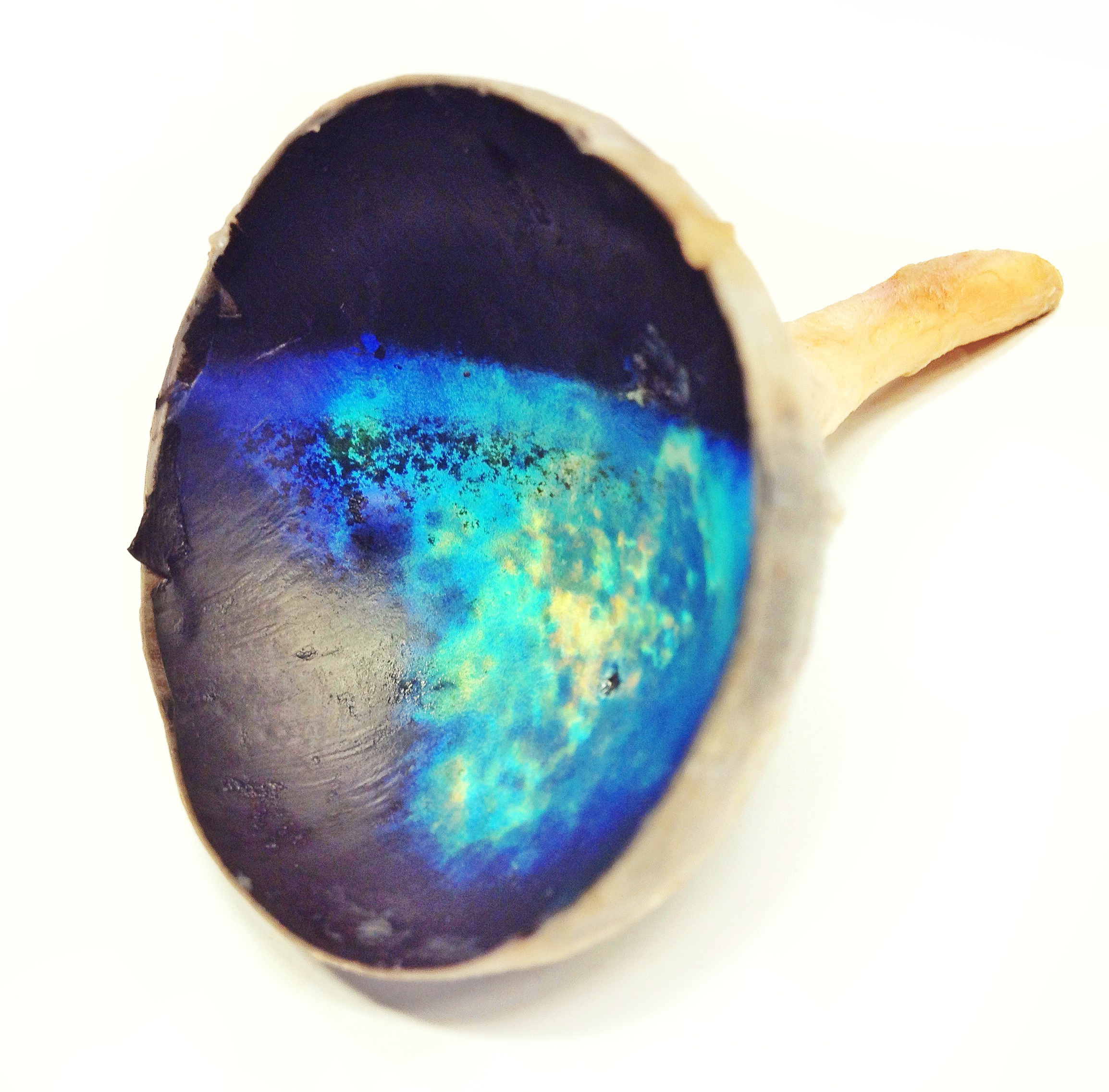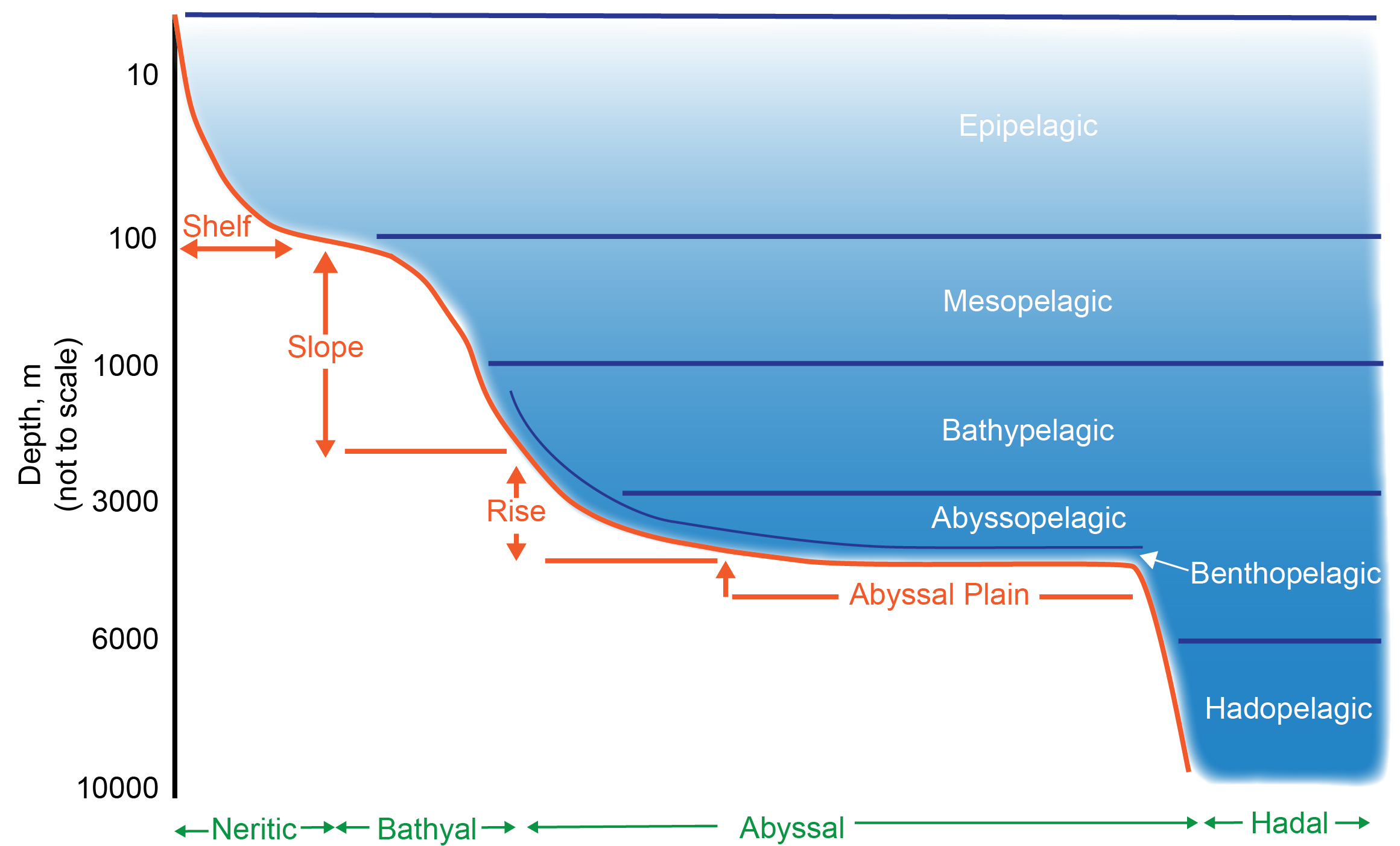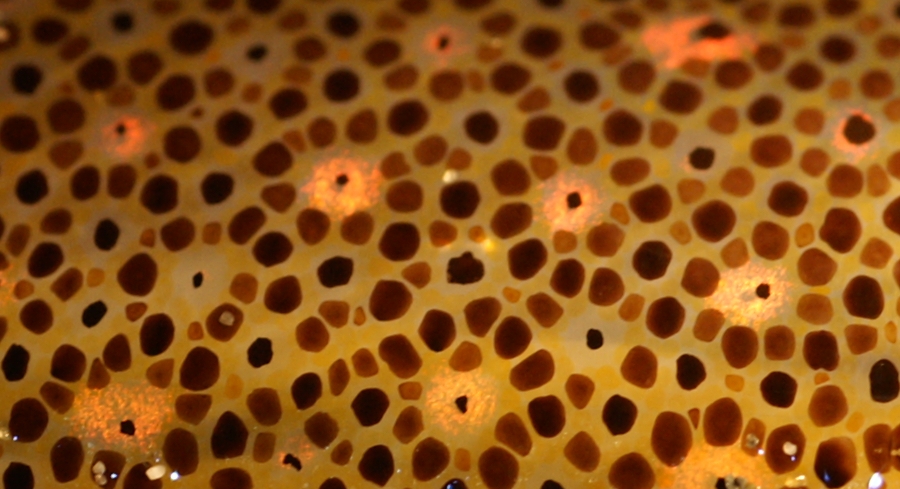|
Eyeshine
The ''tapetum lucidum'' ( ; ; ) is a layer of tissue in the eye of many vertebrates and some other animals. Lying immediately behind the retina, it is a retroreflector. It reflects visible light back through the retina, increasing the light available to the photoreceptors (although slightly blurring the image). The tapetum lucidum contributes to the superior night vision of some animals. Many of these animals are nocturnal, especially carnivores, while others are deep sea animals. Similar adaptations occur in some species of spiders. Haplorhine primates, including humans, are diurnal and lack a ''tapetum lucidum''. Function and mechanism Presence of a ''tapetum lucidum'' enables animals to see in dimmer light than would otherwise be possible. The ''tapetum lucidum'', which is iridescent, reflects light roughly on the interference principles of thin-film optics, as seen in other iridescent tissues. However, the ''tapetum lucidum'' cells are leucophores, not iridophores ... [...More Info...] [...Related Items...] OR: [Wikipedia] [Google] [Baidu] |
Retroreflector
A retroreflector (sometimes called a retroflector or cataphote) is a device or surface that reflects radiation (usually light) back to its source with minimum scattering. This works at a wide range of angle of incidence, unlike a planar mirror, which does this only if the mirror is exactly perpendicular to the wave front, having a zero angle of incidence. Being directed, the retroflector's reflection is brighter than that of a diffuse reflector. Corner reflectors and cat's eye reflectors are the most used kinds. Types There are several ways to obtain retroreflection: Corner reflector A set of three mutually perpendicular reflective surfaces, placed to form the internal corner of a cube, work as a retroreflector. The three corresponding normal vectors of the corner's sides form a basis in which to represent the direction of an arbitrary incoming ray, . When the ray reflects from the first side, say x, the ray's ''x''-component, ''a'', is reversed to −''a'', while the ... [...More Info...] [...Related Items...] OR: [Wikipedia] [Google] [Baidu] |
Night Vision
Night vision is the ability to see in low-light conditions, either naturally with scotopic vision or through a night-vision device. Night vision requires both sufficient spectral range and sufficient intensity range. Humans have poor night vision compared to many animals such as cats, foxes and rabbits, in part because the human eye lacks a tapetum lucidum, tissue behind the retina that reflects light back through the retina thus increasing the light available to the photoreceptors. Types of ranges Spectral range Night-useful spectral range techniques can sense radiation that is invisible to a human observer. Human vision is confined to a small portion of the electromagnetic spectrum called visible light. Enhanced spectral range allows the viewer to take advantage of non-visible sources of electromagnetic radiation (such as near-infrared or ultraviolet radiation). Some animals such as the mantis shrimp and trout can see using much more of the infrared and/or ultraviolet sp ... [...More Info...] [...Related Items...] OR: [Wikipedia] [Google] [Baidu] |
Deep Sea
The deep sea is broadly defined as the ocean depth where light begins to fade, at an approximate depth of 200 metres (656 feet) or the point of transition from continental shelves to continental slopes. Conditions within the deep sea are a combination of low temperatures, darkness and high pressure The deep sea is considered the least explored Earth biome, with the extreme conditions making the environment difficult to access and explore. Organisms living within the deep sea have a variety of adaptations to survive in these conditions. Organisms can survive in the deep sea through a number of feeding methods including scavenging, predation and filtration, with a number of organisms surviving by feeding on marine snow. Marine snow is organic material that has fallen from upper waters into the deep sea. In 1960, the bathyscaphe ''Trieste'' descended to the bottom of the Mariana Trench near Guam, at , the deepest known spot in any ocean. If Mount Everest () were submerged there, it ... [...More Info...] [...Related Items...] OR: [Wikipedia] [Google] [Baidu] |
Chromatophore
Chromatophores are cells that produce color, of which many types are Biological pigment, pigment-containing cells, or groups of cells, found in a wide range of animals including amphibians, fish, reptiles, crustaceans and cephalopods. Mammals and birds, in contrast, have a class of cells called melanocytes for animal coloration, coloration. Chromatophores are largely responsible for generating skin and eye color, eye colour in ectothermic animals and are generated in the neural crest during embryonic development. Mature chromatophores are grouped into subclasses based on their colour (more properly "hue") under white light: xanthophores (yellow), erythrophores (red), iridophores (reflective / iridescence, iridescent), leucophores (white), melanophores (black/brown), and cyanophores (blue). While most chromatophores contain pigments that absorb specific wavelengths of light, the color of leucophores and iridophores is produced by their respective scattering and optical interference ... [...More Info...] [...Related Items...] OR: [Wikipedia] [Google] [Baidu] |
Iridescent
Iridescence (also known as goniochromism) is the phenomenon of certain surfaces that appear to gradually change color as the angle of view or the angle of illumination changes. Examples of iridescence include soap bubbles, feathers, butterfly wings and seashell nacre, and minerals such as opal. It is a kind of structural coloration that is due to wave interference of light in microstructures or thin films. Pearlescence is a related effect where some or most of the reflected light is white. The term pearlescent is used to describe certain paint finishes, usually in the automotive industry, which actually produce iridescent effects. Etymology The word ''iridescence'' is derived in part from the Greek word ἶρις ''îris'' ( gen. ἴριδος ''íridos''), meaning ''rainbow'', and is combined with the Latin suffix ''-escent'', meaning "having a tendency toward". Iris in turn derives from the goddess Iris of Greek mythology, who is the personification of the rainbow and a ... [...More Info...] [...Related Items...] OR: [Wikipedia] [Google] [Baidu] |
Interference (wave Propagation)
In physics, interference is a phenomenon in which two waves combine by adding their displacement together at every single point in space and time, to form a resultant wave of greater, lower, or the same amplitude. Constructive and destructive interference result from the interaction of waves that are correlated or coherent with each other, either because they come from the same source or because they have the same or nearly the same frequency. Interference effects can be observed with all types of waves, for example, light, radio, acoustic, surface water waves, gravity waves, or matter waves. Etymology The word ''interference'' is derived from the Latin words ''inter'' which means "between" and ''fere'' which means "hit or strike", and was coined by Thomas Young in 1801. Mechanisms The principle of superposition of waves states that when two or more propagating waves of the same type are incident on the same point, the resultant amplitude at that point is equal to th ... [...More Info...] [...Related Items...] OR: [Wikipedia] [Google] [Baidu] |
Thin-film Optics
Thin-film optics is the branch of optics that deals with very thin structured layers of different materials. In order to exhibit thin-film optics, the thickness of the layers of material must be similar to the coherence length; for visible light it is most often observed between 200 and 1000 nm of thickness. Layers at this scale can have remarkable reflective properties due to light wave interference and the difference in refractive index between the layers, the air, and the substrate. These effects alter the way the optic reflects and transmits light. This effect, known as thin-film interference, is observable in soap bubbles and oil slicks. More general periodic structures, not limited to planar layers, exhibit structural coloration with more complex dependence on angle, and are known as photonic crystals. In manufacturing, thin film layers can be achieved through the deposition of one or more thin layers of material onto a substrate (usually glass). This is most oft ... [...More Info...] [...Related Items...] OR: [Wikipedia] [Google] [Baidu] |
Bovine Tapetum Lucidum
Bovines (subfamily Bovinae) comprise a diverse group of 10 genera of medium to large-sized ungulates, including cattle, bison, African buffalo, water buffalos, and the four-horned and spiral-horned antelopes. The evolutionary relationship between the members of the group is still debated, and their classification into loose tribes rather than formal subgroups reflects this uncertainty. General characteristics include cloven hooves and usually at least one of the sexes of a species having true horns. The largest extant bovine is the gaur. In many countries, bovid milk and meat is used as food by humans. Cattle are kept as livestock almost everywhere except in parts of India and Nepal, where they are considered sacred by most Hindus. Bovids are used as draft animals and as riding animals. Small breeds of domestic bovid, such as the Miniature Zebu, are kept as pets. Bovid leather is durable and flexible and is used to produce a wide range of goods including clothing and bags. Sy ... [...More Info...] [...Related Items...] OR: [Wikipedia] [Google] [Baidu] |
Anomalopidae
Anomalopidae (lanterneye fishes or flashlight fishes) are a family of fish distinguished by bioluminescent organs located underneath their eyes, for which they are named. These light organs contain luminous bacteria and can be "shut off" by the fish using either a dark lid or by being drawn into a pouch. They are used to communicate, attract prey, and evade predators. Flashlight fish are found in tropical ocean waters across the world. They are typically about in size, although some species can reach twice this length. They are nocturnal, feeding at night on small crustaceans. Some species move to shallow waters near coral reef A coral reef is an underwater ecosystem characterized by reef-building corals. Reefs are formed of colonies of coral polyps held together by calcium carbonate. Most coral reefs are built from stony corals, whose polyps cluster in groups. Co ...s at night, but otherwise, they are exclusively deep water fish. This tends to make their collection diff ... [...More Info...] [...Related Items...] OR: [Wikipedia] [Google] [Baidu] |
Riboflavin
Riboflavin, also known as vitamin B2, is a vitamin found in food and sold as a dietary supplement. It is essential to the formation of two major coenzymes, flavin mononucleotide and flavin adenine dinucleotide. These coenzymes are involved in energy metabolism, cellular respiration, and antibody production, as well as normal growth and development. The coenzymes are also required for the metabolism of niacin, vitamin B6, and folate. Riboflavin is prescribed to treat corneal thinning, and taken orally, may reduce the incidence of migraine headaches in adults. Riboflavin deficiency is rare and is usually accompanied by deficiencies of other vitamins and nutrients. It may be prevented or treated by oral supplements or by injections. As a water-soluble vitamin, any riboflavin consumed in excess of nutritional requirements is not stored; it is either not absorbed or is absorbed and quickly excreted in urine, causing the urine to have a bright yellow tint. Natural sources of rib ... [...More Info...] [...Related Items...] OR: [Wikipedia] [Google] [Baidu] |
Nathan H
Nathan or Natan may refer to: People *Nathan (given name), including a list of people and characters with this name *Nathan (surname) *Nathan (prophet), a person in the Hebrew Bible *Nathan (son of David), biblical figure, son of King David and Bathsheba *Nathan of Gaza, a charismatic figure who spread the word of Eli the Prophet *Starboy Nathan, a British singer who used the stage name "Nathan" from 2006 to 2011 * Nathan (footballer, born 1994), full name ''Nathan Athaydes Campos Ferreira'', Brazilian winger * Nathan (footballer, born 1995), full name ''Nathan Raphael Pelae Cardoso'', Brazilian centre back *Nathan (footballer, born 1996), full name ''Nathan Allan de Souza'', Brazilian midfielder *Nathan (footballer, born May 1999), full name ''Nathan Crepaldi da Cruz'', Brazilian forward *Nathan (footballer, born August 1999), full name ''Nathan Palafoz de Sousa'', Brazilian forward Other uses *Nathan, Queensland, a suburb of Brisbane in Australia *Nathan (band), an alt-coun ... [...More Info...] [...Related Items...] OR: [Wikipedia] [Google] [Baidu] |





